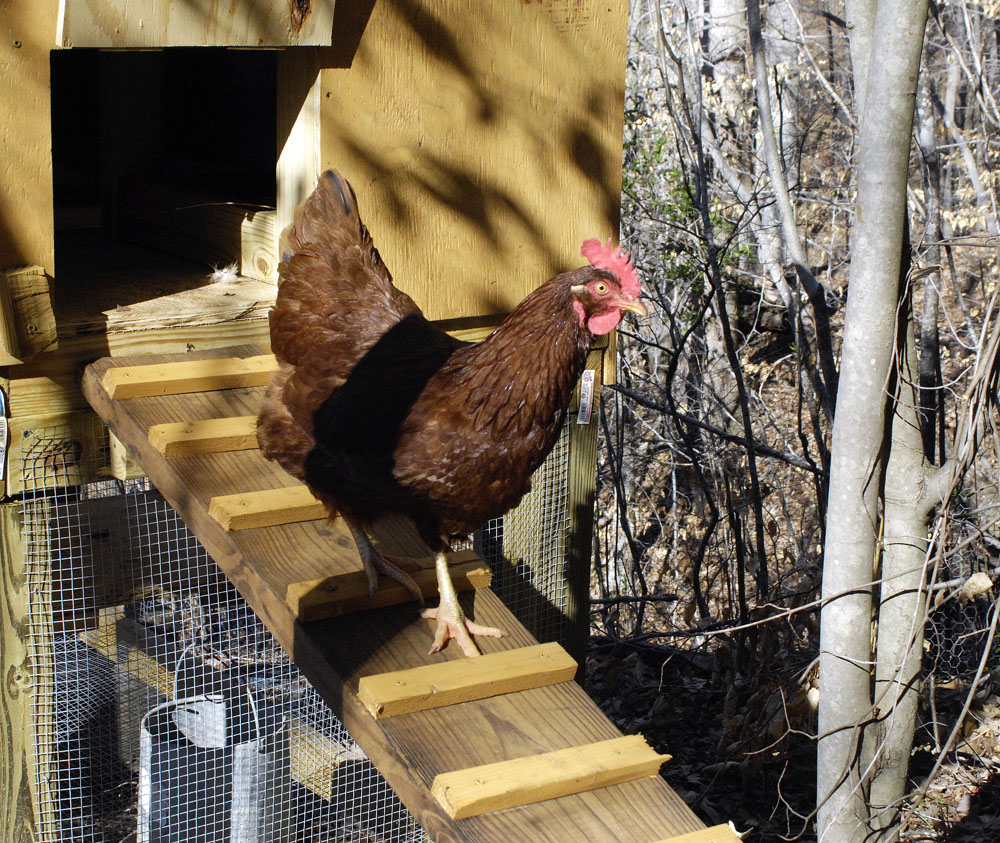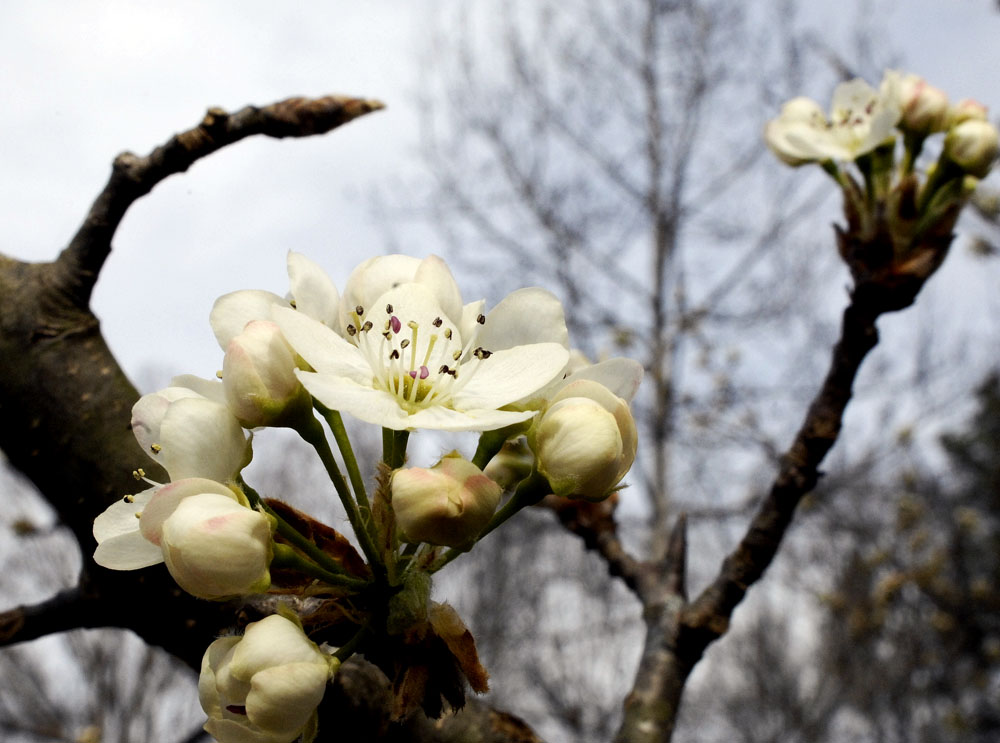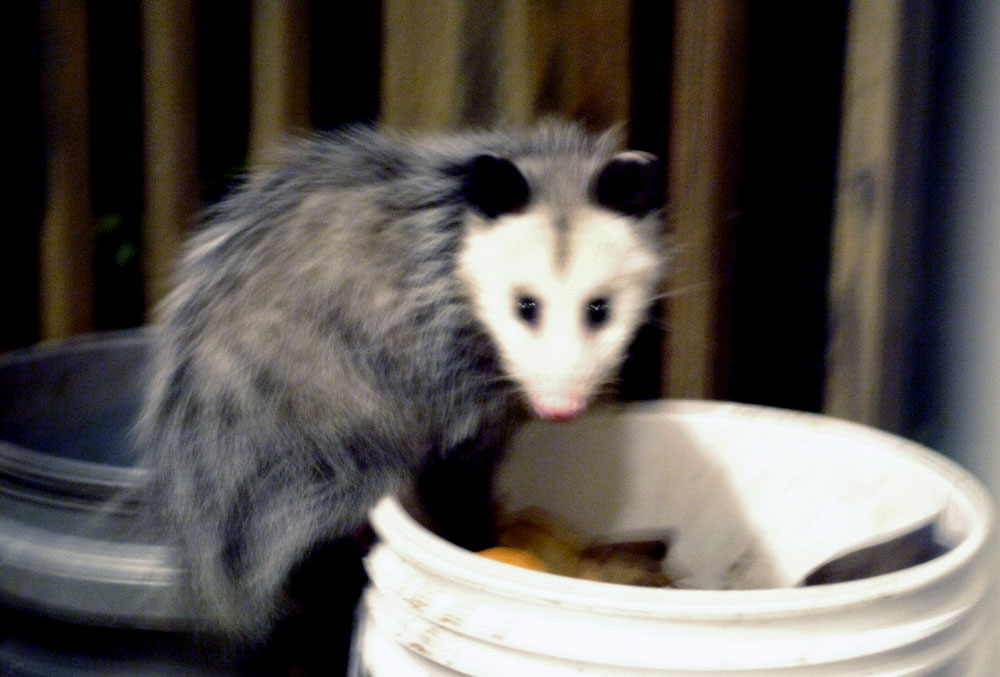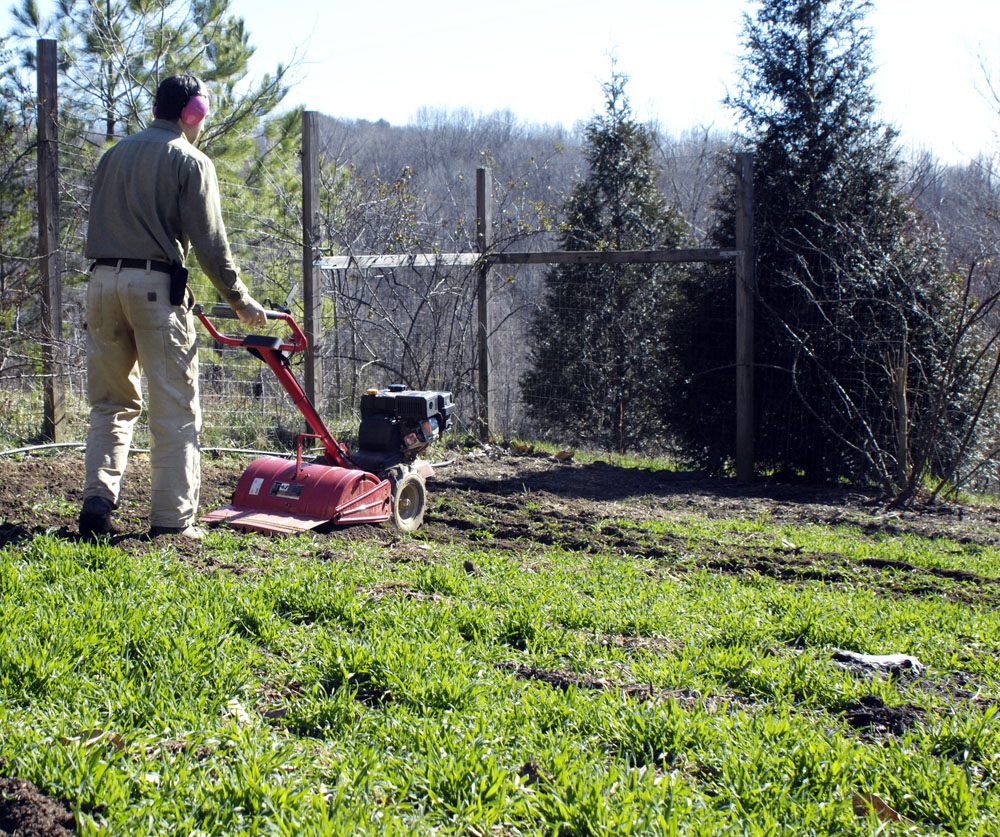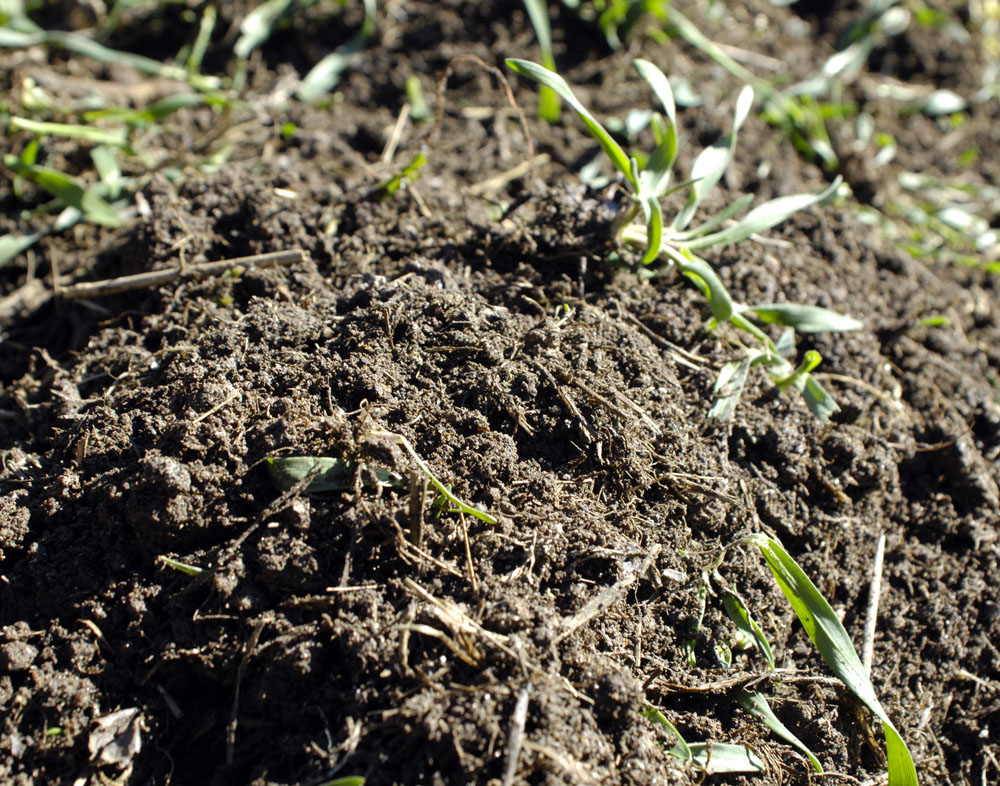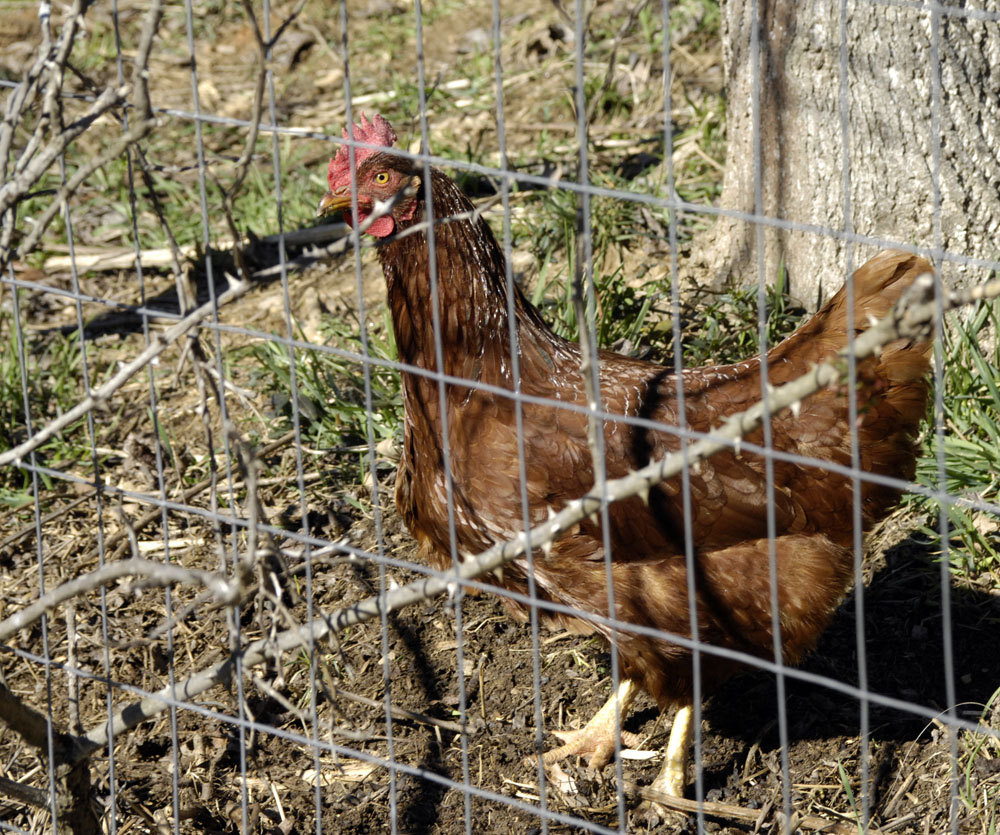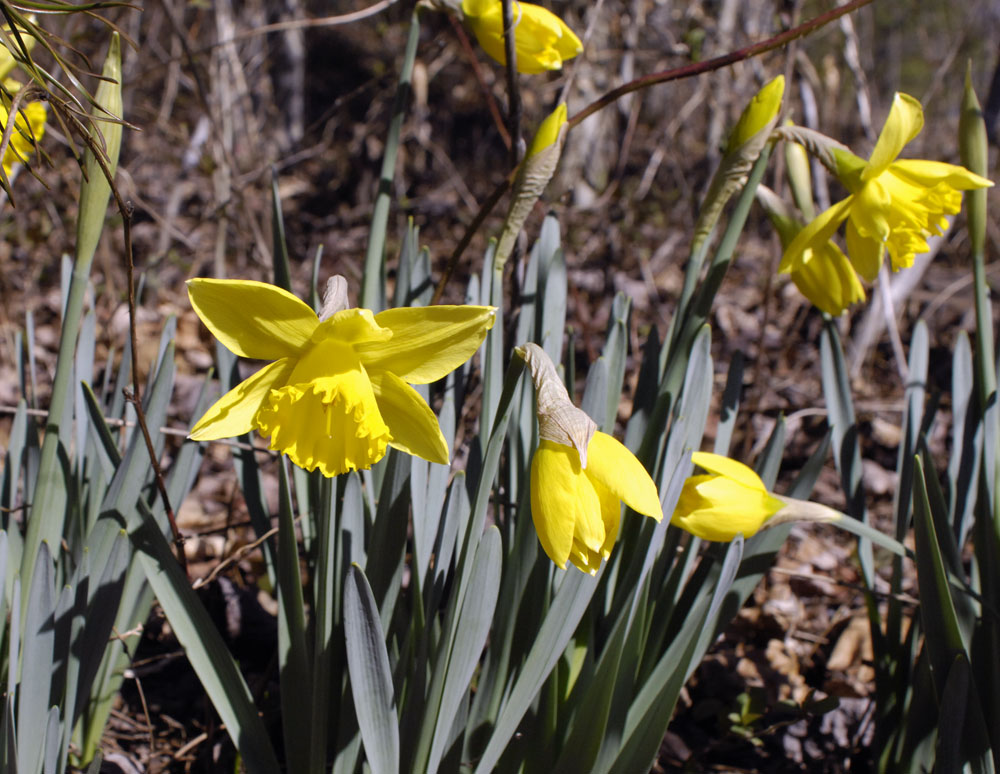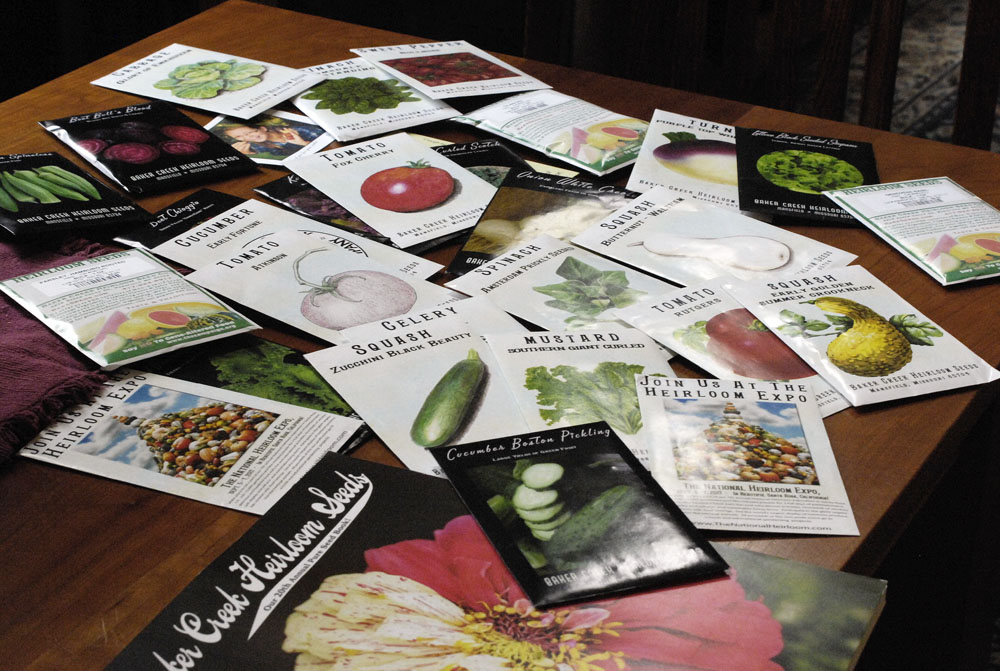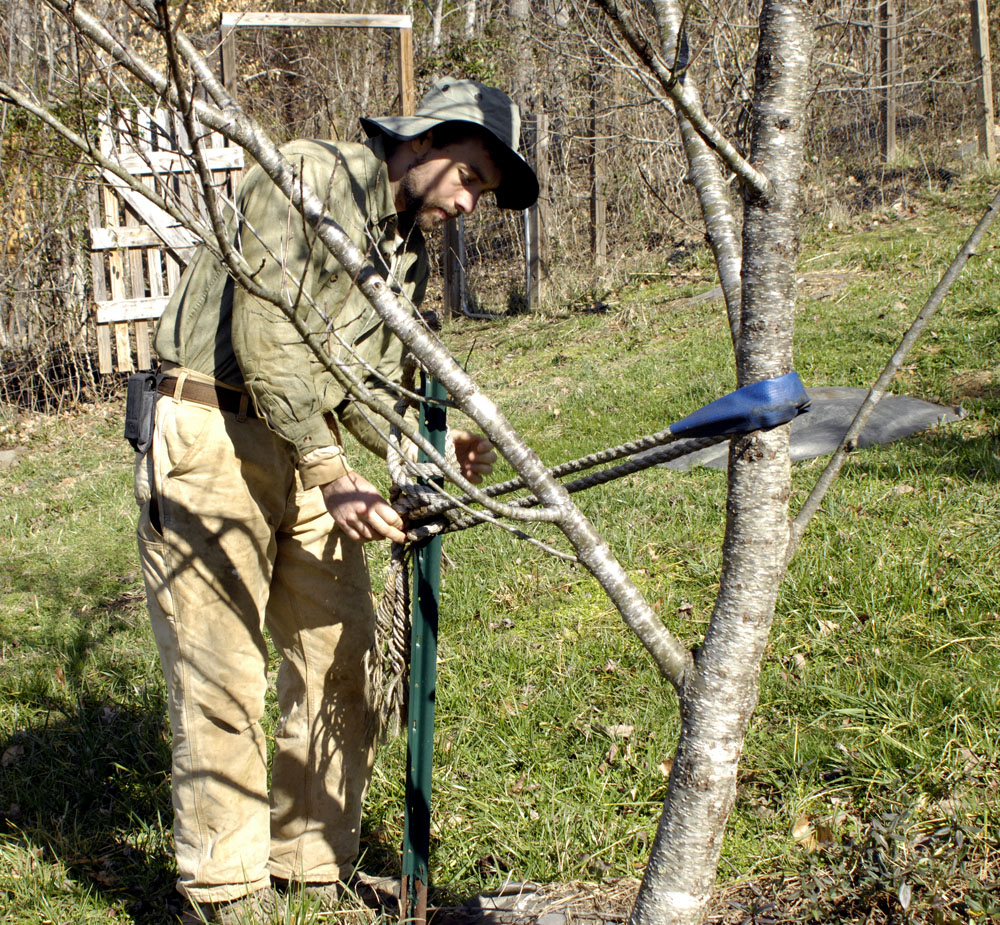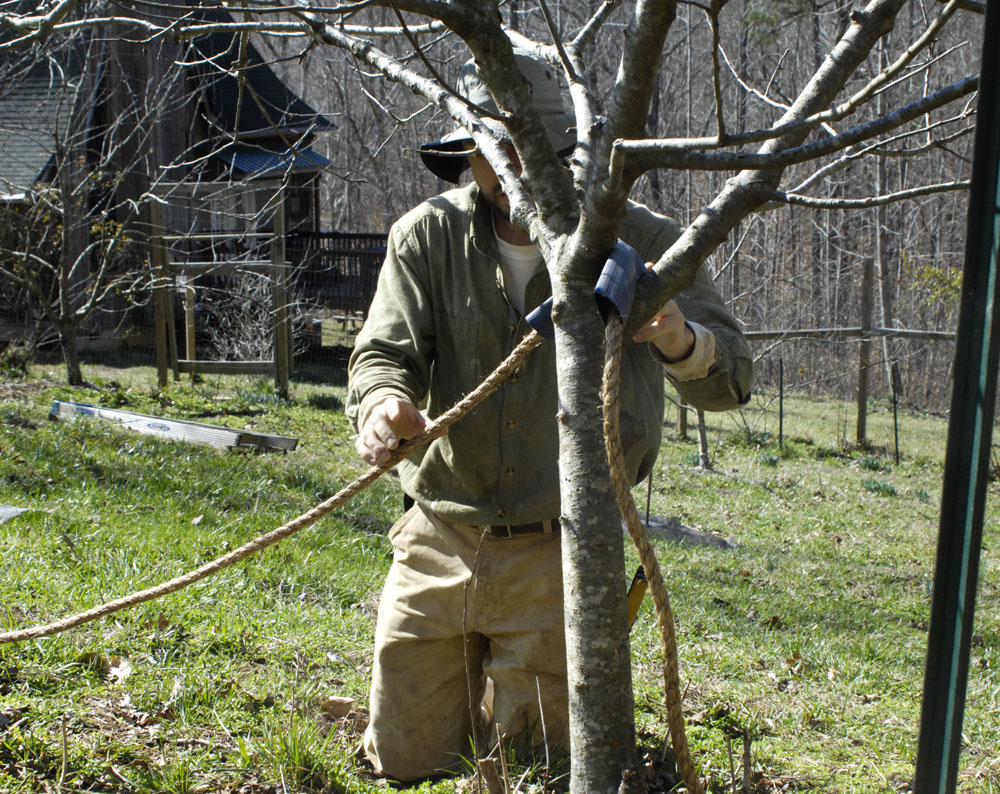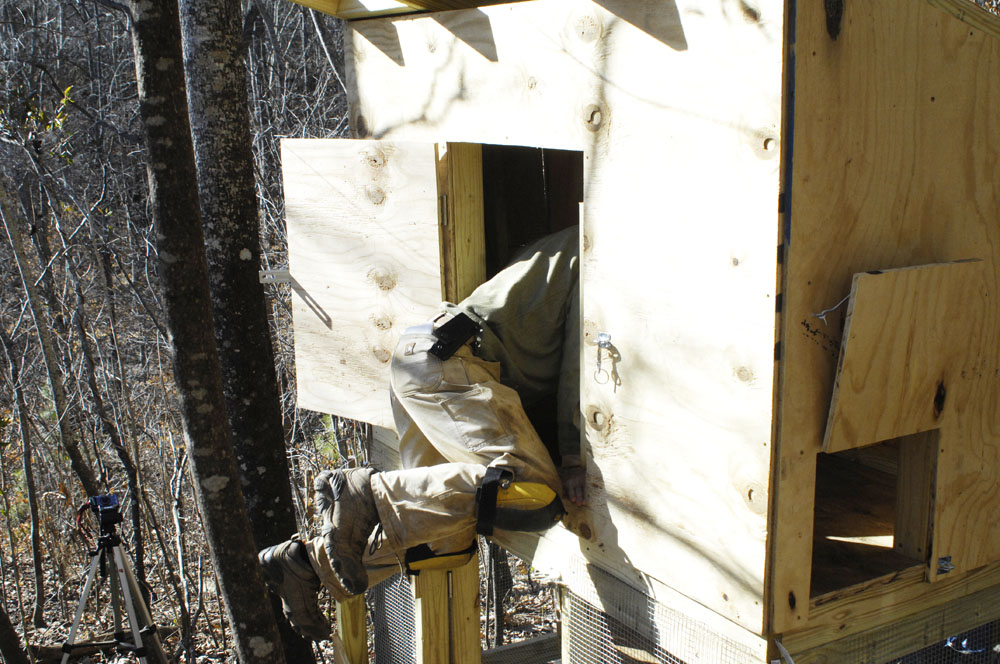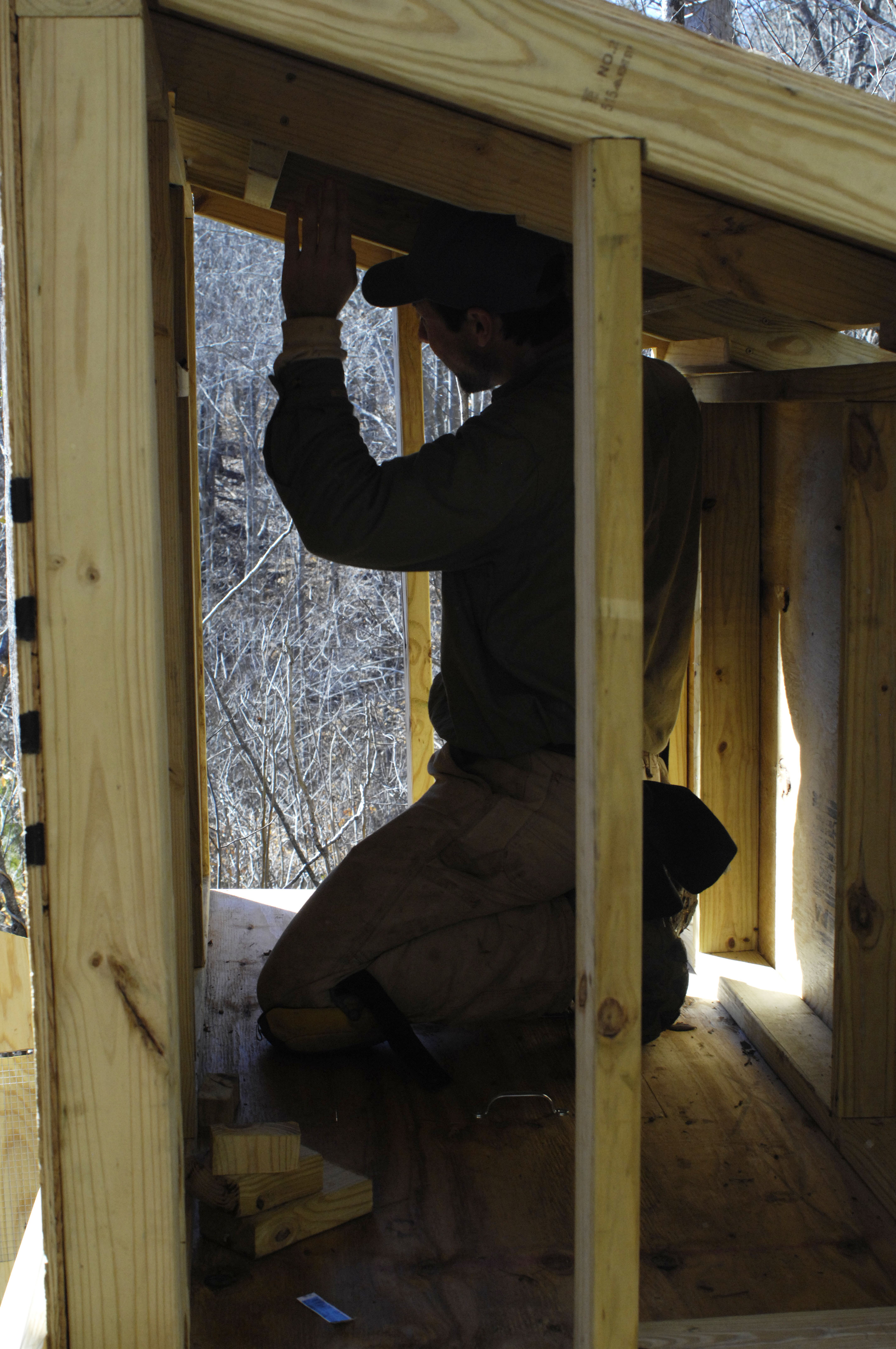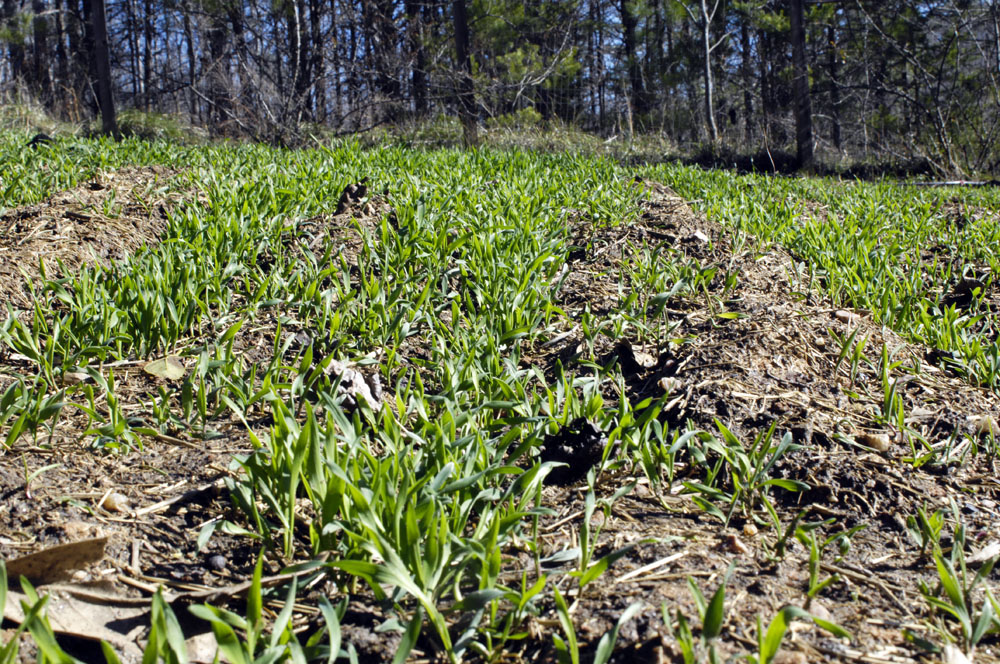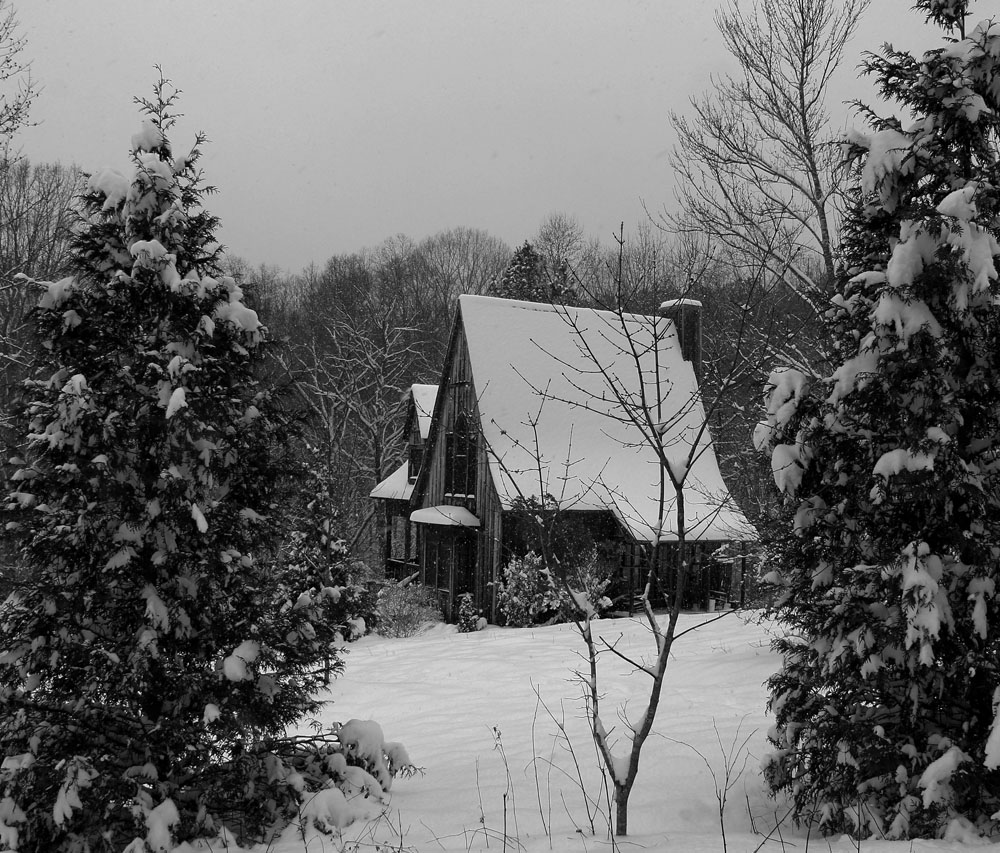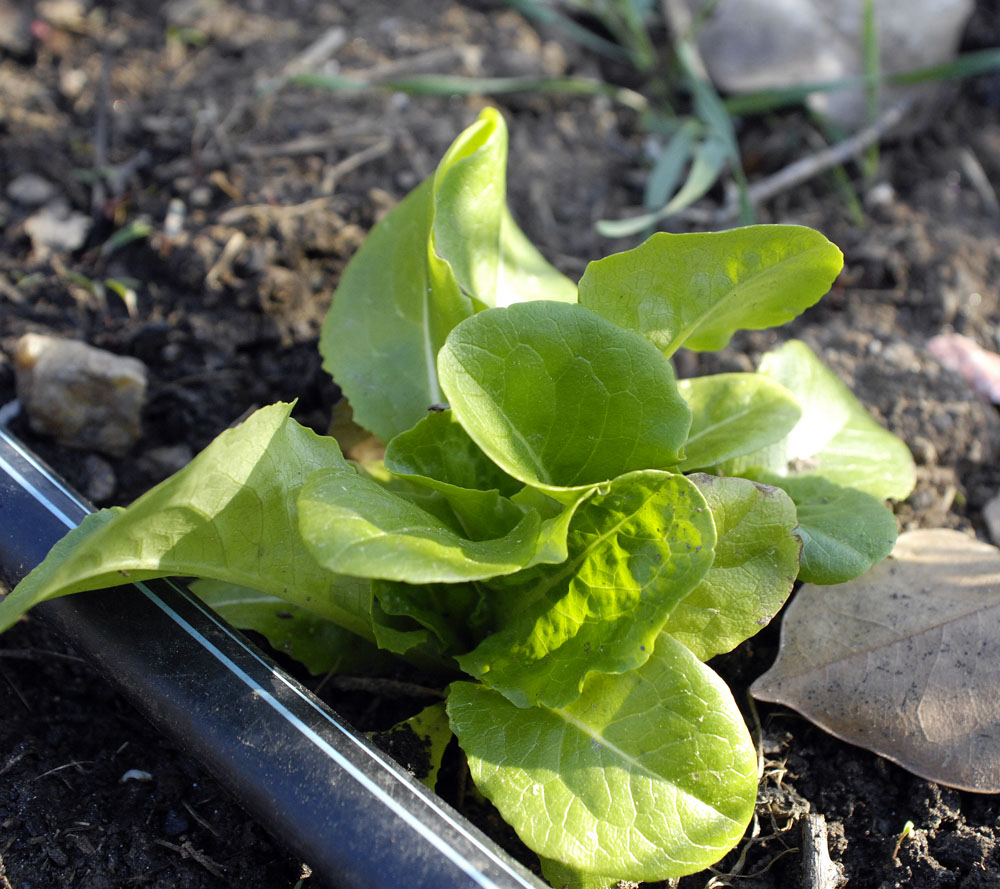
Lettuce, started from a plant bought at the local mill
Though the early spring is exciting, there is a big risk that a cold snap will cause a lot of damage. The apple trees have held back, almost as though there is something wise about them. The peach trees, on the other hand, as well as the plum and pears, have rushed into bloom.
We know a lot of gardeners, including some of the best gardeners in the county, the people who teach master gardener classes, and we’re pretty sure that Ken has one of the earliest, if not the earliest, garden in the county. The garden probably will be fine, though. The early crops can handle light frost. Only a seriously hard freeze would be a problem. Ken does all the garden work, by the way, not me. In only a few weeks, if all goes well, there will be some serious feasting here and much less spent on produce at Whole Foods.
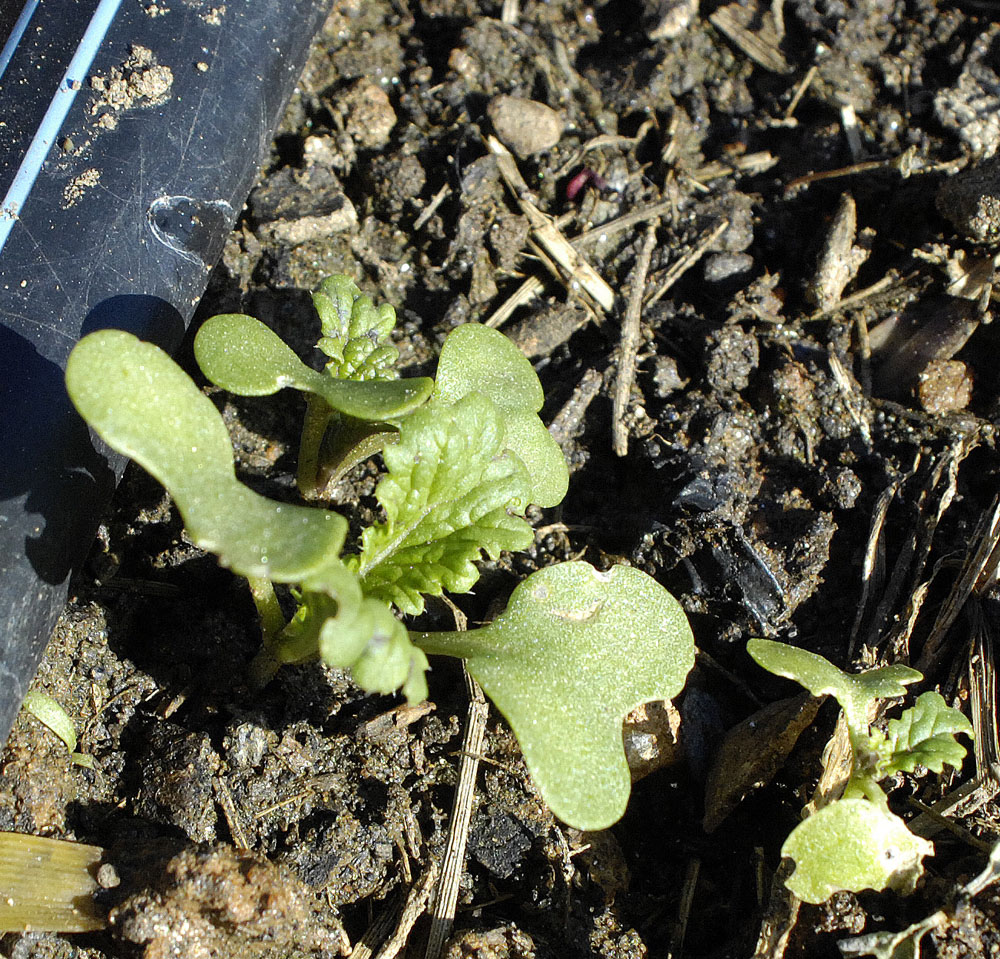
Spring greens, started from seed
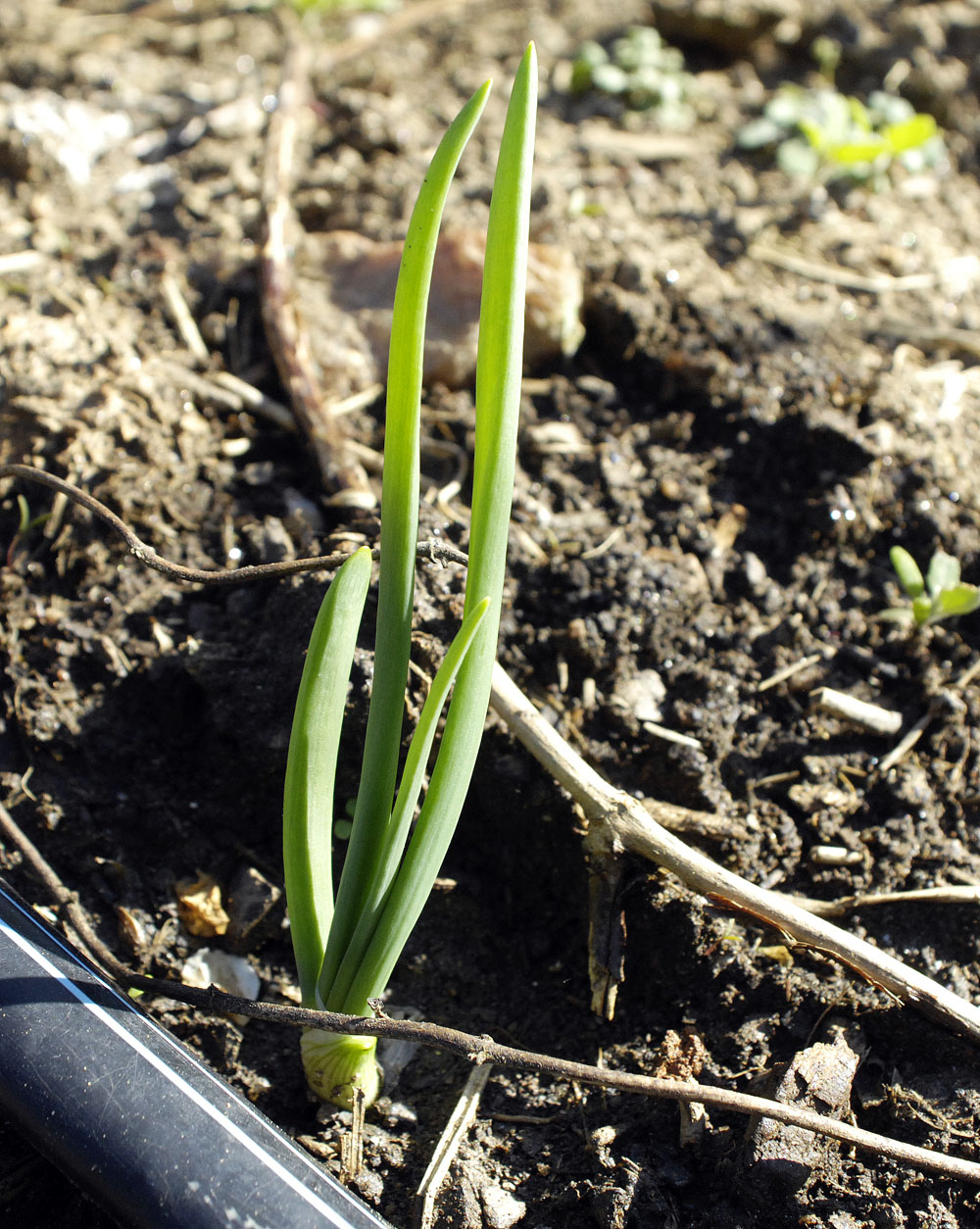
Onion, started from pearl sets. The abbey’s garden soil makes incredible onions.
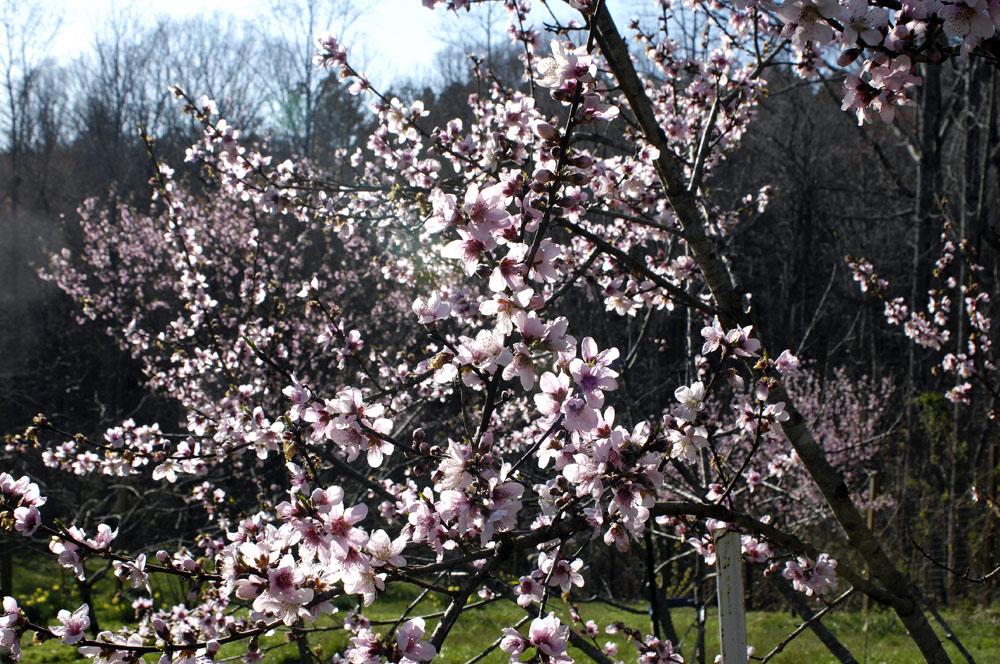
Peach blossoms, fully committed and much too early
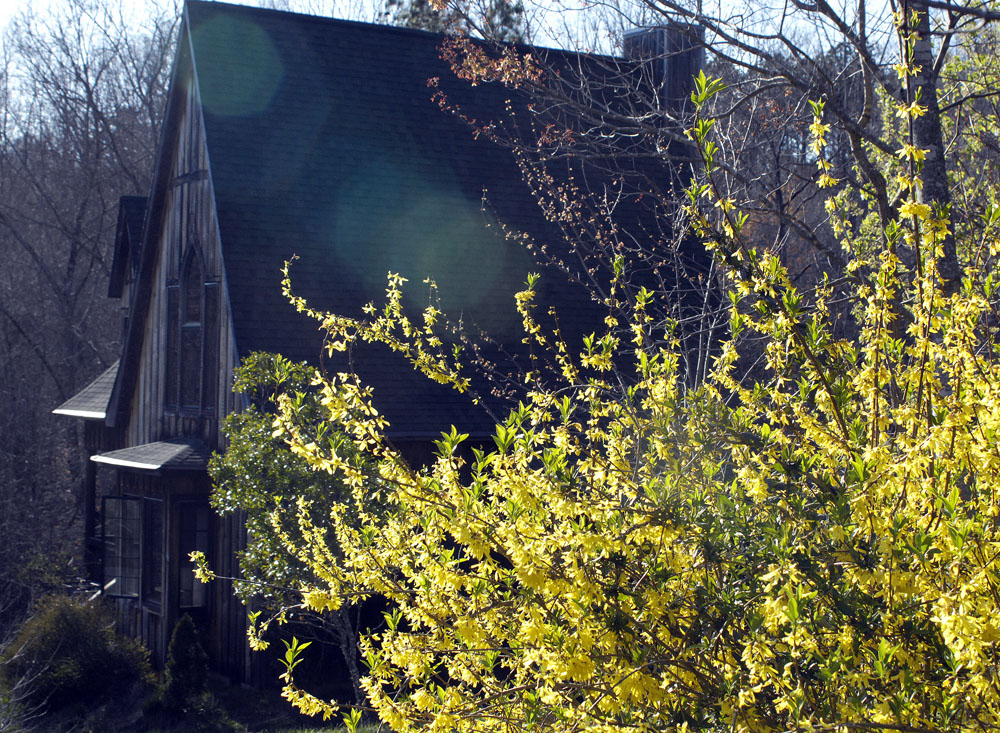
Forsythia. Note that Ken’s bedroom window, the bay window downstairs, is open. It’s 71 degrees out.


